| Citation: |
Jiaxin Song, Malik Ashtar, Ying Yang, Yuan Liu, Mingming Chen, Dawei Cao. Photocatalytic removal of heavy metal ions and antibiotics in agricultural wastewater: A review[J]. Journal of Semiconductors, 2023, 44(11): 111701. doi: 10.1088/1674-4926/44/11/111701
****
J X Song, M Ashtar, Y Yang, Y Liu, M M Chen, D W Cao. Photocatalytic removal of heavy metal ions and antibiotics in agricultural wastewater: A review[J]. J. Semicond, 2023, 44(11): 111701. doi: 10.1088/1674-4926/44/11/111701
|
Photocatalytic removal of heavy metal ions and antibiotics in agricultural wastewater: A review
DOI: 10.1088/1674-4926/44/11/111701
More Information
-
Abstract
In recent years, the treatment of agricultural wastewater has been an important aspect of environmental protection. The purpose of photocatalytic technology is to degrade pollutants by utilizing solar light energy to stimulate the migration of photocarriers to the surface of photocatalysts and occur reduction-oxidation reaction with pollutants in agricultural wastewater. Photocatalytic technology has the characteristics of high efficiency, sustainability, low-energy and free secondary pollution. It is an environmental and economical method to recover water quality that only needs sunlight. In this paper, the mechanism and research progress of photocatalytic removal of heavy metal ions and antibiotics from agricultural water pollution were reviewed by combining photocatalytic degradation process with agricultural treatment technology. The mechanism of influencing factors of photocatalytic degradation efficiency was discussed in detail and corresponding strategies were proposed, which has certain reference value for the development of photocatalytic degradation. -
References
[1] Zhao X L, Yu X Z, Wang X Y, et al. Recent advances in metal-organic frameworks for the removal of heavy metal oxoanions from water. Chemical Engineering Journal, 2021, 407, 127221 doi: 10.1016/j.cej.2020.127221[2] Shrestha R, Ban S, Devkota S, et al. Technological trends in heavy metals removal from industrial wastewater: A review. J Environ Chem Eng, 2021, 9, 105688 doi: 10.1016/j.jece.2021.105688[3] Liu M X , Dong F Q , Nie X Q, et al. Reduction of heavy metal Ions mediated by photoelectron-microorganism synergistic effect and electron transfer mechanism. Progress in Chemistry, 2017, 29, 1537 doi: 10.7536/PC170739[4] Ren G M, Han H T, Wang Y X, et al. Recent advances of photocatalytic application in water treatment: A review. Nanomaterials, 2021, 11, 1804 doi: 10.3390/nano11071804[5] Gao X Y, Meng X C. Photocatalysis for heavy metal treatment: A review. Processes, 2021, 9, 1729 doi: 10.3390/pr9101729[6] Wu S Q, Hu H Y, Lin Y, et al. Visible light photocatalytic degradation of tetracycline over TiO2. Chem Eng J, 2020, 382, 122842 doi: 10.1016/j.cej.2019.122842[7] Lin L H, Hisatomi T, Chen S S, et al. Visible-light-driven photocatalytic water splitting: Recent progress and challenges. Trends Chem, 2020, 2, 813 doi: 10.1016/j.trechm.2020.06.006[8] Ma M M, Wang Z J, Lei Y. An in-depth understanding of photophysics in organic photocatalysts. J Semicond, 2023, 44, 030401 doi: 10.1088/1674-4926/44/3/030401[9] Bai S, Jiang J, Zhang Q, et al. Steering charge kinetics in photocatalysis: Intersection of materials syntheses, characterization techniques and theoretical simulations. Chem Soc Rev, 2015, 44, 2893 doi: 10.1039/C5CS00064E[10] Ng B J, Putri L K, Kong X Y, et al. Z-scheme photocatalytic systems for solar water splitting. Adv Sci, 2020, 7, 1903171 doi: 10.1002/advs.201903171[11] Noor S, Ashar A, Taj M B, et al. Advanced oxidation processes for remediation of persistent organic pollutants. Advanced Oxidation Processes for Wastewater Treatment. Boca Raton: CRC Press, 2022[12] Qian R F, Zong H X, Schneider J, et al. Charge carrier trapping, recombination and transfer during TiO2 photocatalysis: An overview. Catal Today, 2019, 335, 78 doi: 10.1016/j.cattod.2018.10.053[13] Perea Vélez Y S, Carrillo-González R, del Carmen Angeles González-Chávez M. Interaction of metal nanoparticles–plants–microorganisms in agriculture and soil remediation. J Nanoparticle Res, 2021, 23, 1 doi: 10.1007/s11051-020-05135-8[14] Liu Z L, Zhang C, Liu L Z, et al. A conductive network and dipole field for harnessing photogenerated charge kinetics. Adv Mater, 2021, 33, 2104099 doi: 10.1002/adma.202104099[15] Fouda-Mbanga B G, Prabakaran E, Pillay K. Carbohydrate biopolymers, lignin based adsorbents for removal of heavy metals (Cd2+, Pb2+, Zn2+) from wastewater, regeneration and reuse for spent adsorbents including latent fingerprint detection: A review. Biotechnol Rep (Amst), 2021, 30, e00609 doi: 10.1016/j.btre.2021.e00609[16] Kaur M, Kaur M, Singh D, et al. Synthesis of CaFe2O4-NGO nanocomposite for effective removal of heavy metal ion and photocatalytic degradation of organic pollutants. Nanomaterials, 2021, 11, 1471 doi: 10.3390/nano11061471[17] Chen Y, Xu M J, Wen J Y, et al. Selective recovery of precious metals through photocatalysis. Nat Sustain, 2021, 4, 618 doi: 10.1038/s41893-021-00697-4[18] Samar S, Thi H P, Mohammed A T. Review on the visible light photocatalysis for the decomposition of ciprofloxacin, norfloxacin, tetracyclines, and sulfonamides antibiotics in wastewater. Catalysts, 2021, 11, 437 doi: 10.3390/catal11040437[19] Cheng D M, Liu X H, Wang L, et al. Seasonal variation and sediment–water exchange of antibiotics in a shallower large lake in North China. Sci Total Environ, 2014, 476/477, 266 doi: 10.1016/j.scitotenv.2014.01.010[20] Khazaee Z, Mahjoub A R, Cheshme Khavar A H. One-pot synthesis of CuBi bimetallic alloy nanosheets-supported functionalized multiwalled carbon nanotubes as efficient photocatalyst for oxidation of fluoroquinolones. Appl Catal B Environ, 2021, 297, 120480 doi: 10.1016/j.apcatb.2021.120480[21] Arif M, Muhmood T, Zhang M, et al. Highly visible-light active, eco-friendly artificial enzyme and 3D Bi4Ti3O12 biomimetic nanocomposite for efficient photocatalytic tetracycline hydrochloride degradation and Cr(VI) reduction. Chem Eng J, 2022, 434, 134491 doi: 10.1016/j.cej.2021.134491[22] Qu J F, Chen D Y, Li N J, et al. Coral-inspired nanoscale design of porous SnS2 for photocatalytic reduction and removal of aqueous Cr (VI). Appl Catal B Environ, 2017, 207, 404 doi: 10.1016/j.apcatb.2017.02.050[23] Li Z W, Wang L, Qin L, et al. Recent advances in the application of water-stable metal-organic frameworks: Adsorption and photocatalytic reduction of heavy metal in water. Chemosphere, 2021, 285, 131432 doi: 10.1016/j.chemosphere.2021.131432[24] Dhandole L K, Kim S G, Bae H S, et al. Simultaneous and synergistic effect of heavy metal adsorption on the enhanced photocatalytic performance of a visible-light-driven RS-TONR/TNT composite. Environ Res, 2020, 180, 108651 doi: 10.1016/j.envres.2019.108651[25] Zhong S C, Wang Y, Li S X, et al. Enhanced photo-reduction of chromium(VI) from aqueous solution by nanosheet hybrids of covalent organic framework and graphene-phase carbon nitride. Sep Purif Technol, 2022, 294, 121204 doi: 10.1016/j.seppur.2022.121204[26] Yan C M, Dong X L, Wang Y, et al. Porous Cd3(C3N3S3)2/CdS composites with outstanding Cr(VI) photoreduction performance under visible light irradiation. Sep Purif Technol, 2022, 293, 121077 doi: 10.1016/j.seppur.2022.121077[27] Luo N, Chen C, Yang D M, et al. S defect-rich ultrathin 2D MoS2: The role of S point-defects and S stripping-defects in the removal of Cr(VI) via synergistic adsorption and photocatalysis. Appl Catal B Environ, 2021, 299, 120664 doi: 10.1016/j.apcatb.2021.120664[28] Lu Z Y, He F, Hsieh C Y, et al. Magnetic hierarchical photocatalytic nanoreactors: Toward highly selective Cd2+ removal with secondary pollution free tetracycline degradation. ACS Appl Nano Mater, 2019, 2, 1664 doi: 10.1021/acsanm.9b00113[29] Song X F, Qin J T, Li T T, et al. Efficient construction and enriched selective adsorption-photocatalytic activity of PVA/PANI/TiO2 recyclable hydrogel by electron beam radiation. J Appl Polym Sci, 2020, 137, 48516 doi: 10.1002/app.48516[30] Yu T, Lv L Y, Wang H M, et al. Enhanced photocatalytic treatment of Cr(VI) and phenol by monoclinic BiVO4 with {010}-orientation growth. Mater Res Bull, 2018, 107, 248 doi: 10.1016/j.materresbull.2018.07.033[31] Moafi M H, Ardestani M, Mehrdadi N. Use of zinc oxide nano-photocatalyst as a recyclable catalyst for removal of arsenic and lead ions from polluted water. J Health, 2021, 12, 130 doi: 10.52547/j.health.12.1.130[32] Ren W Q, Wan C L, Li Z W, et al. Functional CdS nanocomposites recovered from biomineralization treatment of sulfate wastewater and its applications in the perspective of photocatalysis and electrochemistry. Sci Total Environ, 2020, 742, 140646 doi: 10.1016/j.scitotenv.2020.140646[33] Zhang J Y, Yan M W, Sun G C, et al. Simultaneous removal of Cu(II), Cd(II), Cr(VI), and rhodamine B in wastewater using TiO2 nanofibers membrane loaded on porous fly ash ceramic support. Sep Purif Technol, 2021, 272, 118888 doi: 10.1016/j.seppur.2021.118888[34] Zhang J Y, Zhang W T, Yuan F, et al. Effect of Bi5O7I/calcined ZnAlBi-LDHs composites on Cr(VI) removal via adsorption and photocatalytic reduction. Appl Surf Sci, 2021, 562, 150129 doi: 10.1016/j.apsusc.2021.150129[35] Li Y X, Wang C C, Fu H F, et al. Marigold-flower-like TiO2/MIL-125 core–shell composite for enhanced photocatalytic Cr(VI) reduction. J Environ Chem Eng, 2021, 9, 105451 doi: 10.1016/j.jece.2021.105451[36] Huang H S, Jiang X, Li N J, et al. Noble-metal-free ultrathin MXene coupled with In2S3 nanoflakes for ultrafast photocatalytic reduction of hexavalent chromium. Appl Catal B Environ, 2021, 284, 119754 doi: 10.1016/j.apcatb.2020.119754[37] Zhao X S, Huang S B, Liu Y, et al. In situ preparation of highly stable polyaniline/W18O49 hybrid nanocomposite as efficient visible light photocatalyst for aqueous Cr(VI) reduction. J Hazard Mater, 2018, 353, 466 doi: 10.1016/j.jhazmat.2018.04.005[38] Bilgic A. Fabrication of monoBODIPY-functionalized Fe3O4@SiO2@TiO2 nanoparticles for the photocatalytic degradation of rhodamine B under UV irradiation and the detection and removal of Cu(II) ions in aqueous solutions. J Alloys Compd, 2022, 899, 163360 doi: 10.1016/j.jallcom.2021.163360[39] Kanakaraju D, Ravichandar S, Lim Y C. Combined effects of adsorption and photocatalysis by hybrid TiO2/ZnO-calcium alginate beads for the removal of copper. J Environ Sci, 2017, 55, 214 doi: 10.1016/j.jes.2016.05.043[40] He F, Lu Z Y, Song M S, et al. Selective reduction of Cu2+ with simultaneous degradation of tetracycline by the dual channels ion imprinted POPD-CoFe2O4 heterojunction photocatalyst. Chem Eng J, 2019, 360, 750 doi: 10.1016/j.cej.2018.12.034[41] Kabra K, Chaudhary R, Sawhney R L. Solar photocatalytic removal of Cu(II), Ni(II), Zn(II) and Pb(II): Speciation modeling of metal–citric acid complexes. J Hazard Mater, 2008, 155, 424 doi: 10.1016/j.jhazmat.2007.11.083[42] Bagtache R, Zahra S, Abdi A, et al. Characterization of CuCo2O4 Prepared by Nitrate Route: Application to Ni2+ reduction under visible light. J Photochem Photobiol A Chem, 2020, 400, 112728 doi: 10.1016/j.jphotochem.2020.112728[43] Djilali M A, Mellal M, Mekatel H, et al. Synthesis, physical, optical and electrochemical properties of the ilmenite CrFeO3: Application to photo-reduction of Ni2+. Int J Hydrog Energy, 2022, 47, 1589 doi: 10.1016/j.ijhydene.2021.10.134[44] Xiao R, Tobin J, Zha M Q, et al. A nanoporous graphene analog for superfast heavy metal removal and continuous-flow visible-light photoredox catalysis. J Mater Chem A, 2017, 5, 20180 doi: 10.1039/C7TA05534J[45] Miri A, Sedighi A S, Najafidoust A, et al. Study of photodegradation performance and ability of lead removal of green synthesised maghemite nanoparticles. Int J Environ Anal Chem, 2021, 1 doi: 10.1080/03067319.2021.1986035[46] You S Z, Hu Y, Liu X C, et al. Synergetic removal of Pb(II) and dibutyl phthalate mixed pollutants on Bi2O3-TiO2 composite photocatalyst under visible light. Appl Catal B Environ, 2018, 232, 288 doi: 10.1016/j.apcatb.2018.03.025[47] Hosseini F, Mohebbi S. High efficient photocatalytic reduction of aqueous Zn2+, Pb2+ and Cu2+ ions using modified titanium dioxide nanoparticles with amino acids. J Ind Eng Chem, 2020, 85, 190 doi: 10.1016/j.jiec.2020.01.040[48] Kumordzi G, Malekshoar G, Yanful E K, et al. Solar photocatalytic degradation of Zn2+ using graphene based TiO2. Sep Purif Technol, 2016, 168, 294 doi: 10.1016/j.seppur.2016.05.040[49] Wu C X, Xing Z P, Fang B, et al. Polyoxometalate-based yolk@shell dual Z-scheme superstructure tandem heterojunction nanoreactors: Encapsulation and confinement effects. J Mater Chem A, 2022, 10, 180 doi: 10.1039/D1TA07800C[50] Wang W, Fang J J, Shao S F, et al. Compact and uniform TiO2@g-C3N4 core-shell quantum heterojunction for photocatalytic degradation of tetracycline antibiotics. Appl Catal B Environ, 2017, 217, 57 doi: 10.1016/j.apcatb.2017.05.037[51] Wu Y X, Zhao X S, Huang S B, et al. Facile construction of 2D g-C3N4 supported nanoflower-like NaBiO3 with direct Z-scheme heterojunctions and insight into its photocatalytic degradation of tetracycline. J Hazard Mater, 2021, 414, 125547 doi: 10.1016/j.jhazmat.2021.125547[52] Zhang X Y, Wang X, Chai J N, et al. Construction of novel symmetric double Z-scheme BiFeO3/CuBi2O4/BaTiO3 photocatalyst with enhanced solar-light-driven photocatalytic performance for degradation of norfloxacin. Appl Catal B Environ, 2020, 272, 119017 doi: 10.1016/j.apcatb.2020.119017[53] Zhang J W, Shen B X, Hu Z Z, et al. Uncovering the synergy between Mn substitution and O vacancy in ZnAl-LDH photocatalyst for efficient toluene removal. Appl Catal B Environ, 2021, 296, 120376 doi: 10.1016/j.apcatb.2021.120376[54] Zheng J, Shu D J. Regulation of surface properties of photocatalysis material TiO2 by strain engineering. J Semicond, 2020, 41, 091703 doi: 10.1088/1674-4926/41/9/091703[55] Babu A, Vasanth A, Nair S, et al. WO3 passivation layer-coated nanostructured TiO2: An efficient defect engineered photoelectrode for dye sensitized solar cell. J Semicond, 2021, 42, 052701 doi: 10.1088/1674-4926/42/5/052701[56] Lin Y, Yang C P, Niu Q Y, et al. Interfacial charge transfer between silver phosphate and W2N3 induced by nitrogen vacancies enhances removal of β -lactam antibiotics. Adv Funct Materials, 2022, 32, 2108814 doi: 10.1002/adfm.202108814[57] Li X Y, Li K Y, Du J, et al. Nitrogen-rich porous polymeric carbon nitride with enhanced photocatalytic activity for synergistic removal of organic and heavy metal pollutants. Environ Sci: Nano, 2022, 9, 2388 doi: 10.1039/D2EN00243D[58] Liu M J, Zhang D P, Han J L, et al. Adsorption enhanced photocatalytic degradation sulfadiazine antibiotic using porous carbon nitride nanosheets with carbon vacancies. Chem Eng J, 2020, 382, 123017 doi: 10.1016/j.cej.2019.123017[59] Hailili R, Wang Z Q, Li Y X, et al. Oxygen vacancies induced visible-light photocatalytic activities of CaCu3Ti4O12 with controllable morphologies for antibiotic degradation. Appl Catal B Environ, 2018, 221, 422 doi: 10.1016/j.apcatb.2017.09.026[60] Ding J, Dai Z, Qin F, et al. Z-scheme BiO1- xBr/Bi2O2CO3 photocatalyst with rich oxygen vacancy as electron mediator for highly efficient degradation of antibiotics. Appl Catal B Environ, 2017, 205, 281 doi: 10.1016/j.apcatb.2016.12.018[61] Chen L, Wang Y X, Cheng S, et al. Nitrogen defects/boron dopants engineered tubular carbon nitride for efficient tetracycline hydrochloride photodegradation and hydrogen evolution. Appl Catal B Environ, 2022, 303, 120932 doi: 10.1016/j.apcatb.2021.120932[62] Chuaicham C, Sekar K, Xiong Y H, et al. Single-step synthesis of oxygen-doped hollow porous graphitic carbon nitride for photocatalytic ciprofloxacin decomposition. Chem Eng J, 2021, 425, 130502 doi: 10.1016/j.cej.2021.130502[63] Jin Y, Li F, Li T, et al. Enhanced internal electric field in S-doped BiOBr for intercalation, adsorption and degradation of ciprofloxacin by photoinitiation. Appl Catal B Environ, 2022, 302, 120824 doi: 10.1016/j.apcatb.2021.120824[64] Zhang C, He D H, Fu S S, et al. Silver iodide decorated ZnSn(OH)6 hollow cube: Room-temperature preparation and application for highly efficient photocatalytic oxytetracycline degradation. Chem Eng J, 2021, 421, 129810 doi: 10.1016/j.cej.2021.129810[65] Yang Y, Zeng G M, Huang D L, et al. Molecular engineering of polymeric carbon nitride for highly efficient photocatalytic oxytetracycline degradation and H2O2 production. Appl Catal B Environ, 2020, 272, 118970 doi: 10.1016/j.apcatb.2020.118970[66] Ni J X, Liu D M, Wang W, et al. Hierarchical defect-rich flower-like BiOBr/Ag nanoparticles/ultrathin g-C3N4 with transfer channels plasmonic Z-scheme heterojunction photocatalyst for accelerated visible-light-driven photothermal-photocatalytic oxytetracycline degradation. Chem Eng J, 2021, 419, 129969 doi: 10.1016/j.cej.2021.129969[67] Yu H B, Huang J H, Jiang L B, et al. Enhanced photocatalytic tetracycline degradation using N-CQDs/OV-BiOBr composites: Unraveling the complementary effects between N-CQDs and oxygen vacancy. Chem Eng J, 2020, 402, 126187 doi: 10.1016/j.cej.2020.126187[68] Li X B, Xiong J, Gao X M, et al. Novel BP/BiOBr S-scheme nano-heterojunction for enhanced visible-light photocatalytic tetracycline removal and oxygen evolution activity. J Hazard Mater, 2020, 387, 121690 doi: 10.1016/j.jhazmat.2019.121690[69] Du Z, Feng L, Guo Z L, et al. Ultrathin h-BN/Bi2MoO6 heterojunction with synergetic effect for visible-light photocatalytic tetracycline degradation. J Colloid Interface Sci, 2021, 589, 545 doi: 10.1016/j.jcis.2021.01.027[70] Kumar A, Sharma G, Kumari A, et al. Construction of dual Z-scheme g-C3N4/Bi4Ti3O12/Bi4O5I2 heterojunction for visible and solar powered coupled photocatalytic antibiotic degradation and hydrogen production: Boosting via I−/I3− and Bi3+/Bi5+ redox mediators. Appl Catal B Environ, 2021, 284, 119808 doi: 10.1016/j.apcatb.2020.119808[71] Li J Y, Xia Z, Ma D, et al. Improving photocatalytic activity by construction of immobilized Z-scheme CdS/Au/TiO2 nanobelt photocatalyst for eliminating norfloxacin from water. J Colloid Interface Sci, 2021, 586, 243 doi: 10.1016/j.jcis.2020.10.088[72] Lv X C, Yan D Y S, Lam F L Y, et al. Solvothermal synthesis of copper-doped BiOBr microflowers with enhanced adsorption and visible-light driven photocatalytic degradation of norfloxacin. Chem Eng J, 2020, 401, 126012 doi: 10.1016/j.cej.2020.126012[73] Behera A, Kandi D, Mansingh S, et al. Facile synthesis of ZnFe2O4@RGO nanocomposites towards photocatalytic ciprofloxacin degradation and H2 energy production. J Colloid Interface Sci, 2019, 556, 667 doi: 10.1016/j.jcis.2019.08.109[74] Chen M X, Dai Y Z, Guo J, et al. Solvothermal synthesis of biochar@ZnFe2O4/BiOBr Z-scheme heterojunction for efficient photocatalytic ciprofloxacin degradation under visible light. Appl Surf Sci, 2019, 493, 1361 doi: 10.1016/j.apsusc.2019.04.160[75] Xu X F, Chen J, Lai G X, et al. Theoretical study on enhancing the monolayer MoS 2 photocatalytic water splitting with alloying and stress. J Fuel Chem Technol, 2020, 48, 321 doi: 10.1016/S1872-5813(20)30015-3[76] Wang G W, Zhang H G, Wang M, et al. Morphology-dependent photocatalytic activity of TiO2 crystals. Indian J Chem Sect A, 2020, 59, 646[77] Gupta S K, Tripathi D C, Garg A, et al. Determination of defect states and surface photovoltage in PTB7: PC71BM based bulk heterojunction solar cells. Sol Energy Mater Sol Cells, 2021, 224, 110994 doi: 10.1016/j.solmat.2021.110994[78] Nam H J, Amemiya T, Murabayashi M, et al. The influence of Na+ on the crystallite size of TiO2 and the photocatalytic activity. Res Chem Intermed, 2005, 31, 365 doi: 10.1163/1568567053956725[79] Wang H, Tang Q, Chen Z, et al. Recent advances on silica-based nanostructures in photocatalysis. Sci China Mater, 2020, 63, 2189 doi: 10.1007/s40843-020-1381-y[80] Zalfani M, van der Schueren B, Mahdouani M, et al. ZnO quantum dots decorated 3DOM TiO2 nanocomposites: Symbiose of quantum size effects and photonic structure for highly enhanced photocatalytic degradation of organic pollutants. Appl Catal B Environ, 2016, 199, 187 doi: 10.1016/j.apcatb.2016.06.016[81] Maarisetty D, Baral S S. Defect engineering in photocatalysis: Formation, chemistry, optoelectronics, and interface studies. J Mater Chem A, 2020, 8, 18560 doi: 10.1039/D0TA04297H[82] Serrà A, Philippe L, Perreault F, et al. Photocatalytic treatment of natural waters. Reality or hype? The case of cyanotoxins remediation. Water Res, 2021, 188, 116543 doi: 10.1016/j.watres.2020.116543[83] Kang F W, Sun G H, Boutinaud P, et al. Recent advances and prospects of persistent luminescent materials as inner secondary self-luminous light source for photocatalytic applications. Chem Eng J, 2021, 403, 126099 doi: 10.1016/j.cej.2020.126099[84] Patiphatpanya P, Intaphong P, Phuruangrat A, et al. Effect of ph on photocatalytic activities of biobr nanomaterials synthesized by sonochemical method. Dig J Nanomater Biostructures, 2020, 15, 115 doi: 10.15251/DJNB.2020.151.115[85] Lotfi S, Fischer K, Schulze A, et al. Photocatalytic degradation of steroid hormone micropollutants by TiO2-coated polyethersulfone membranes in a continuous flow-through process. Nat Nanotechnol, 2022, 17, 417 doi: 10.1038/s41565-022-01074-8 -
Proportional views





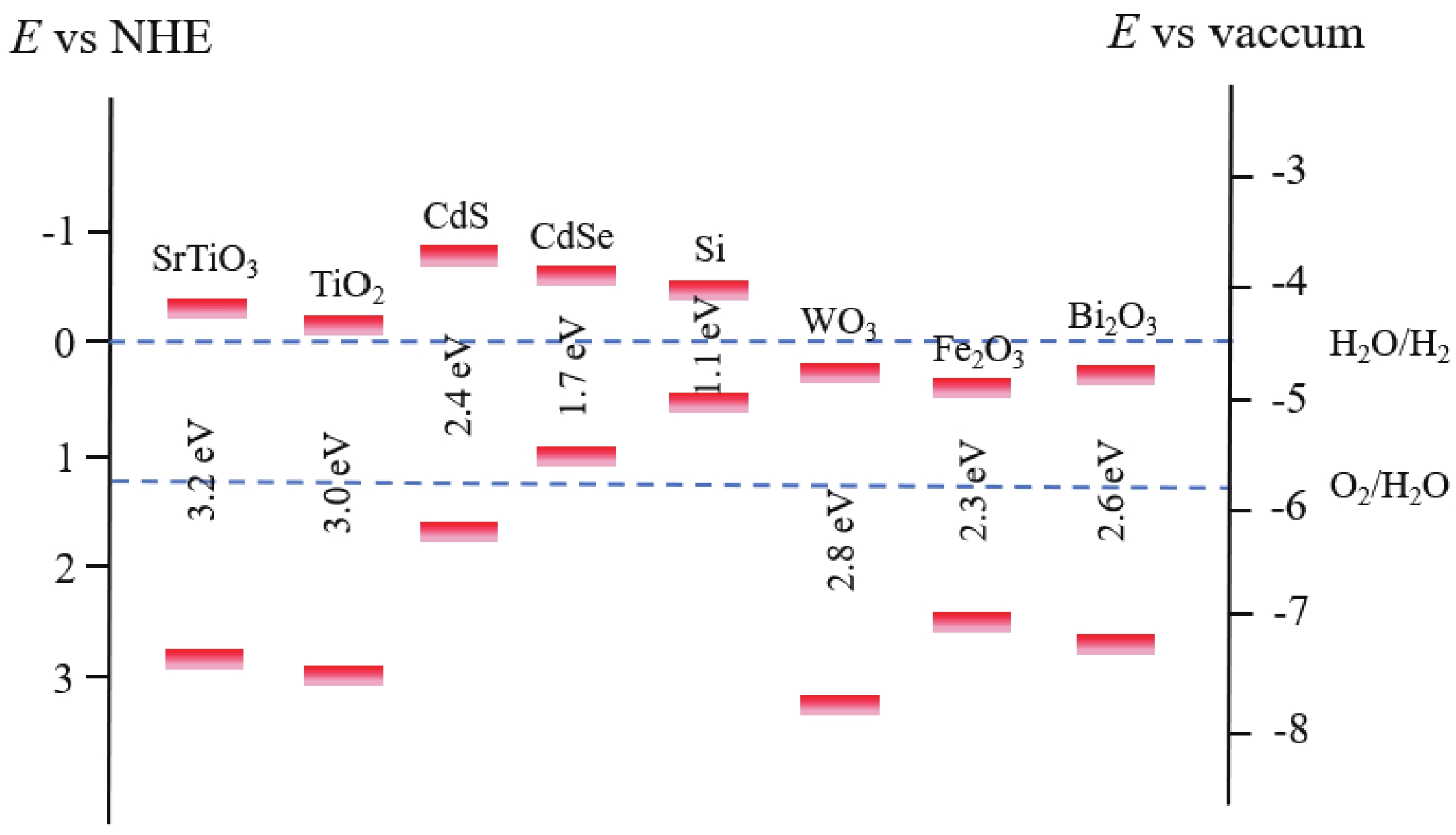
 DownLoad:
DownLoad:
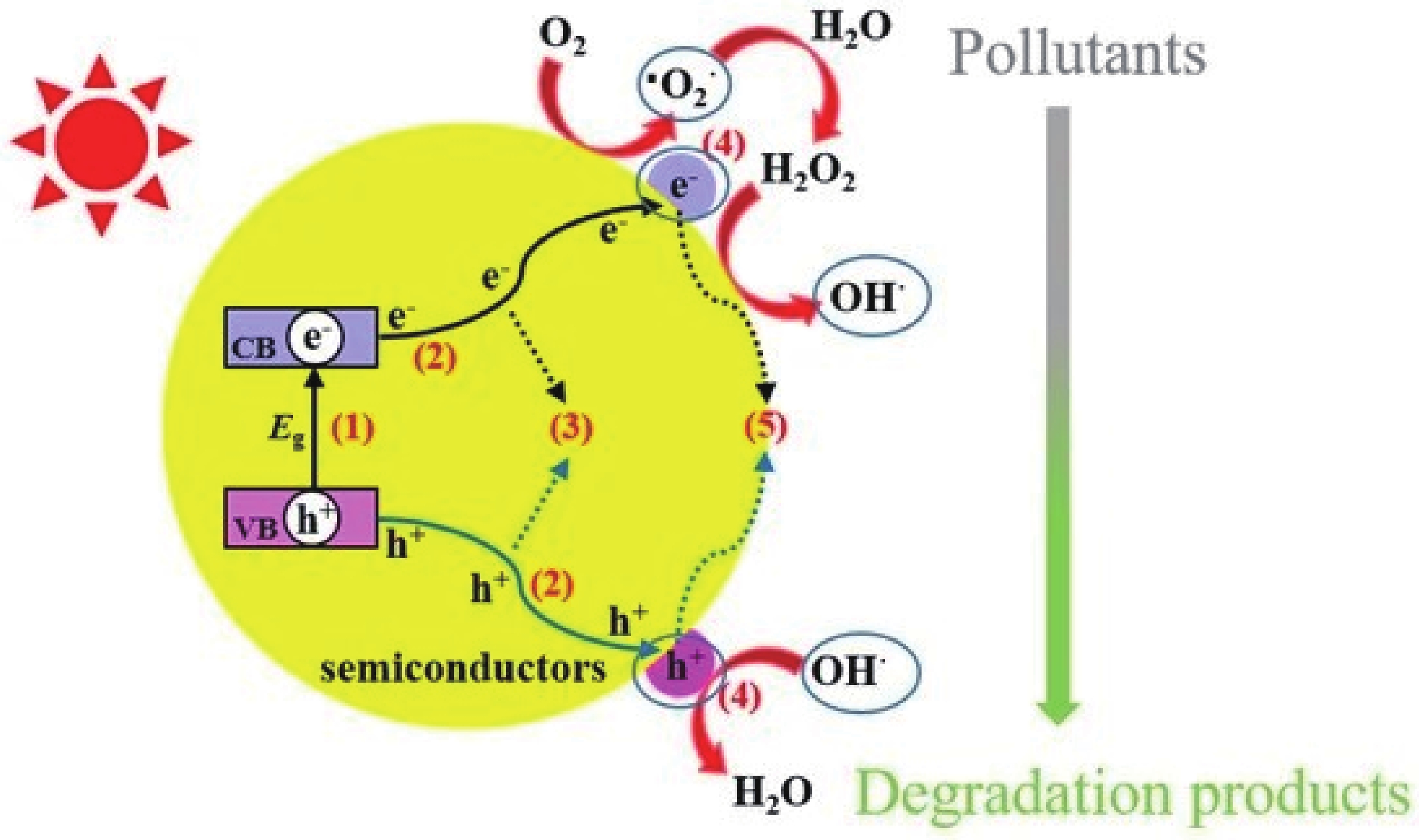
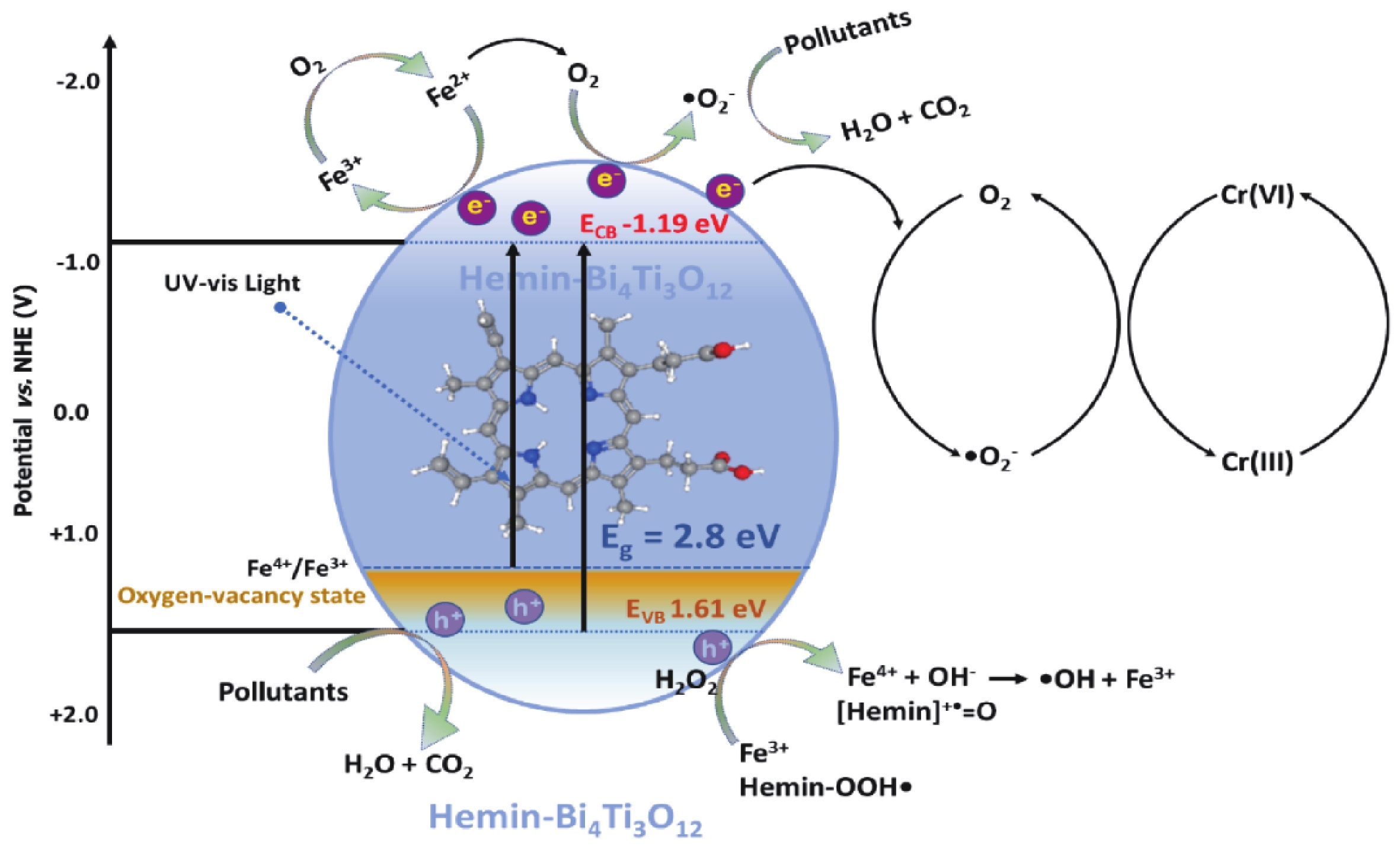
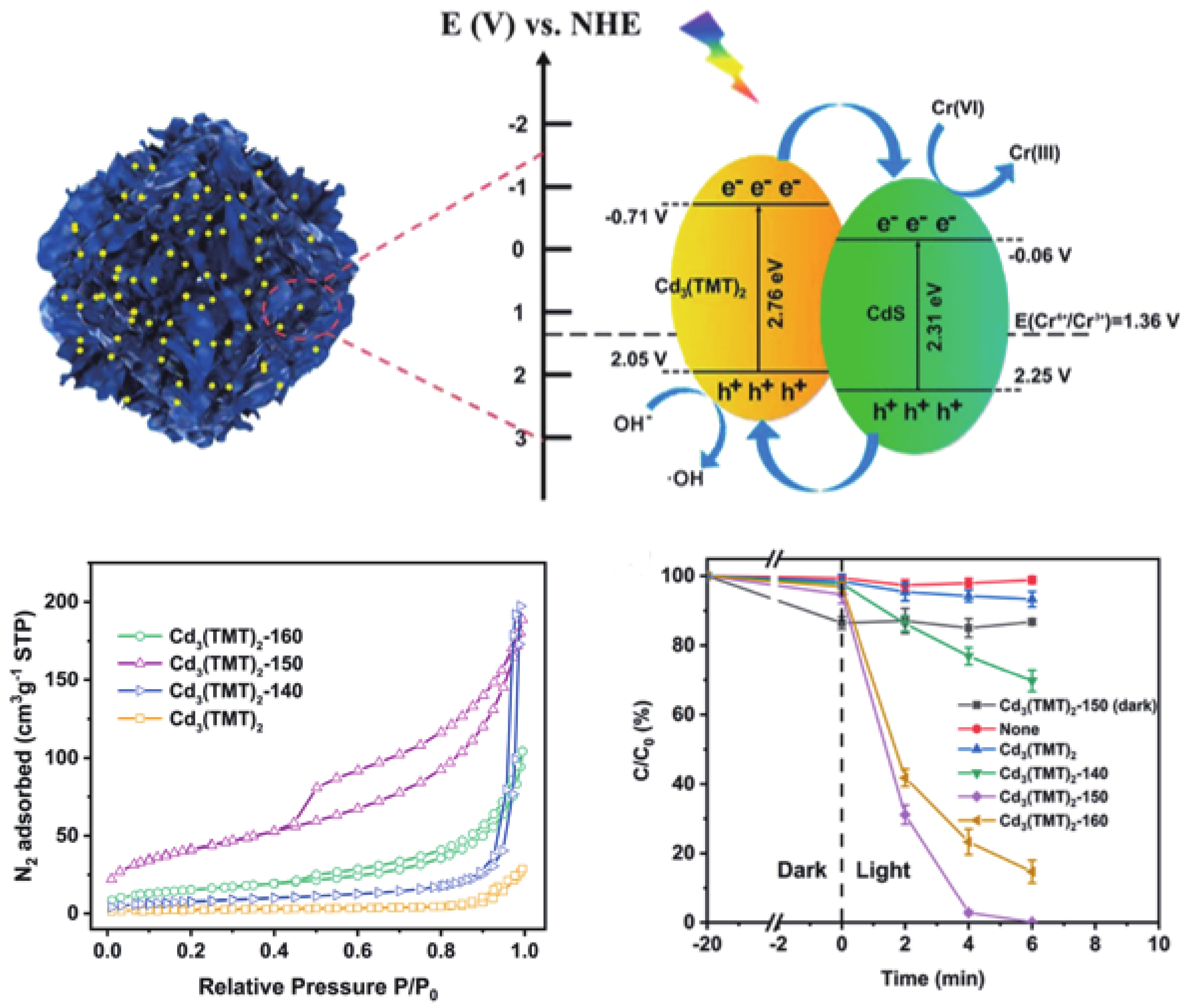
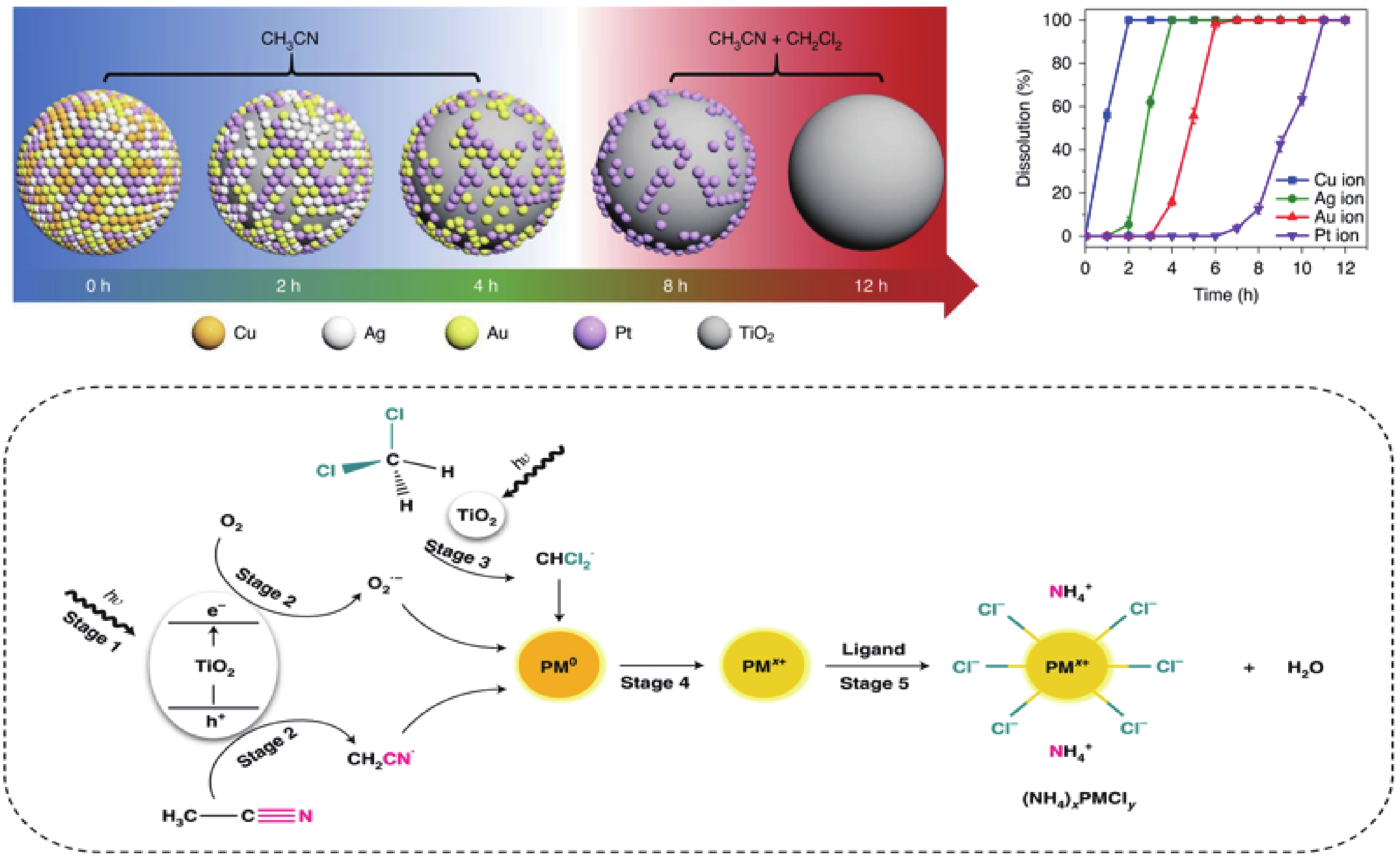
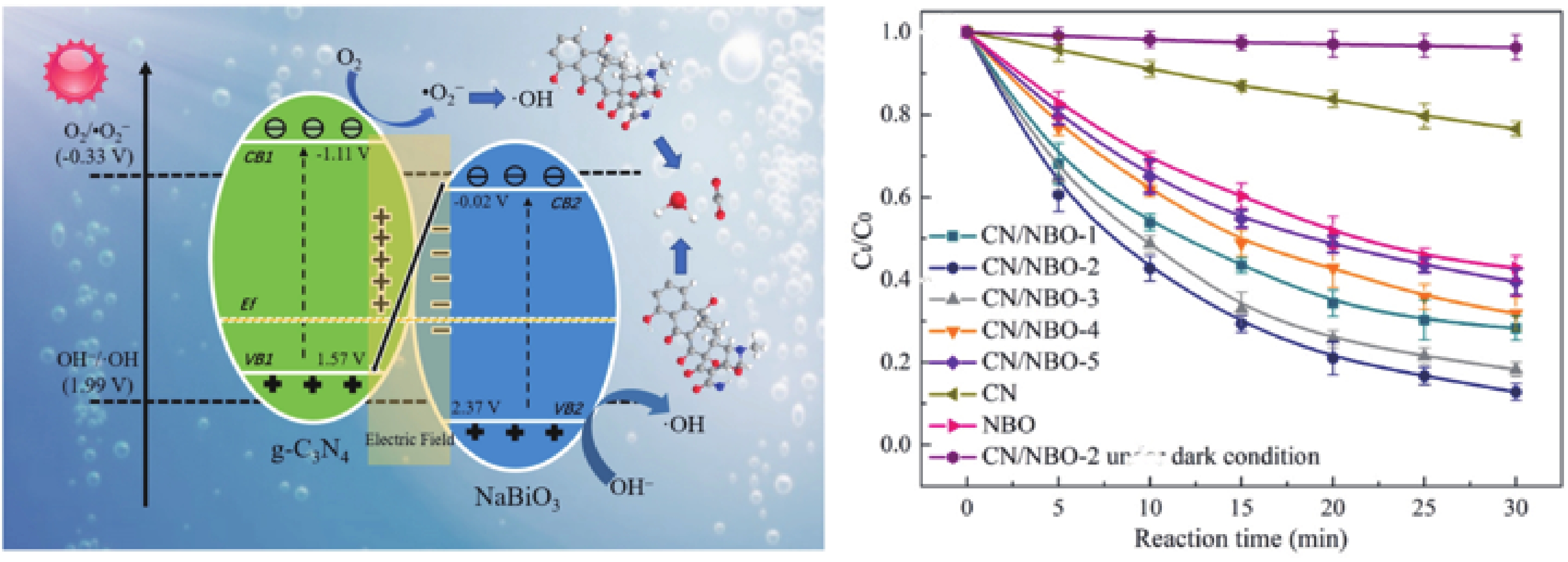
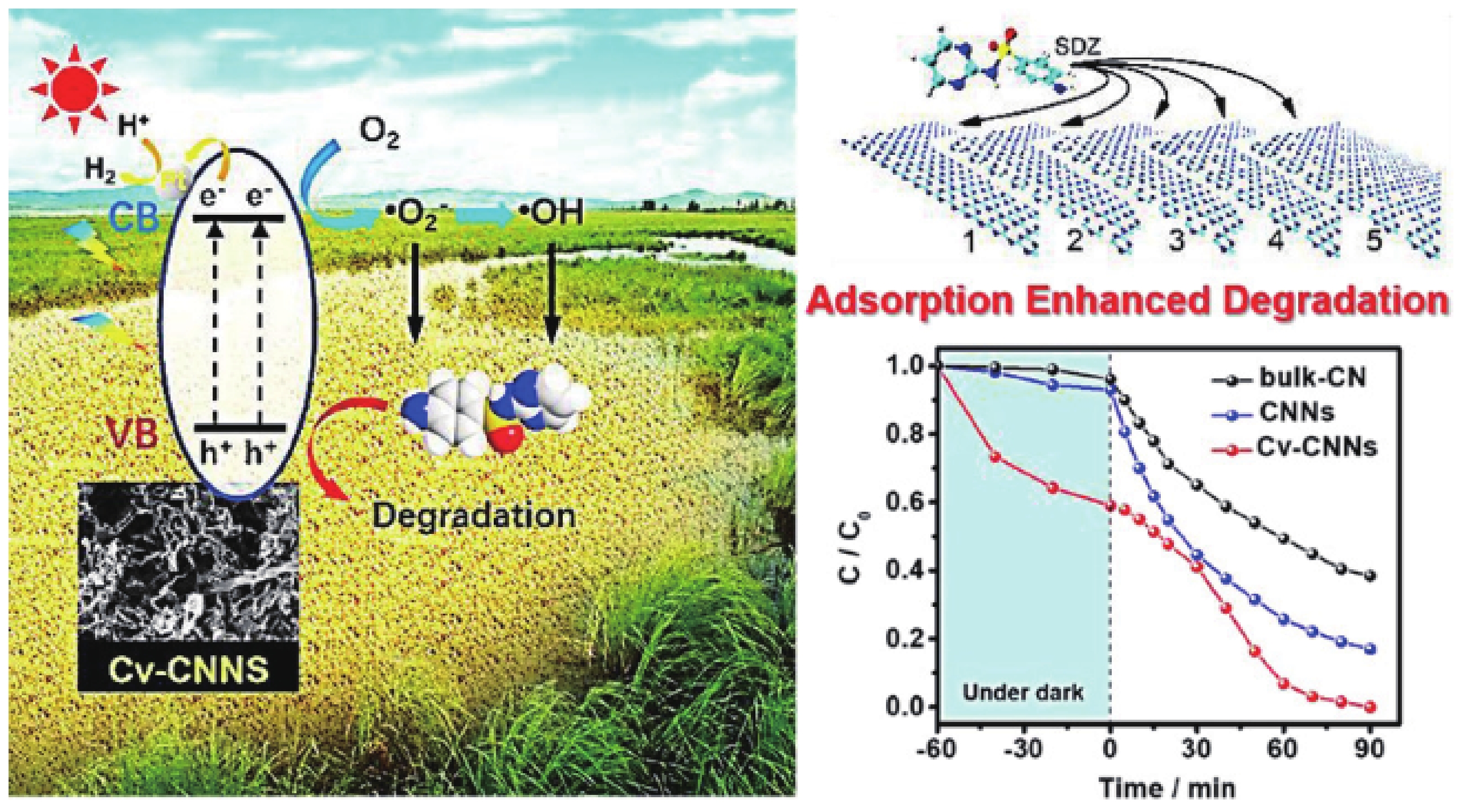
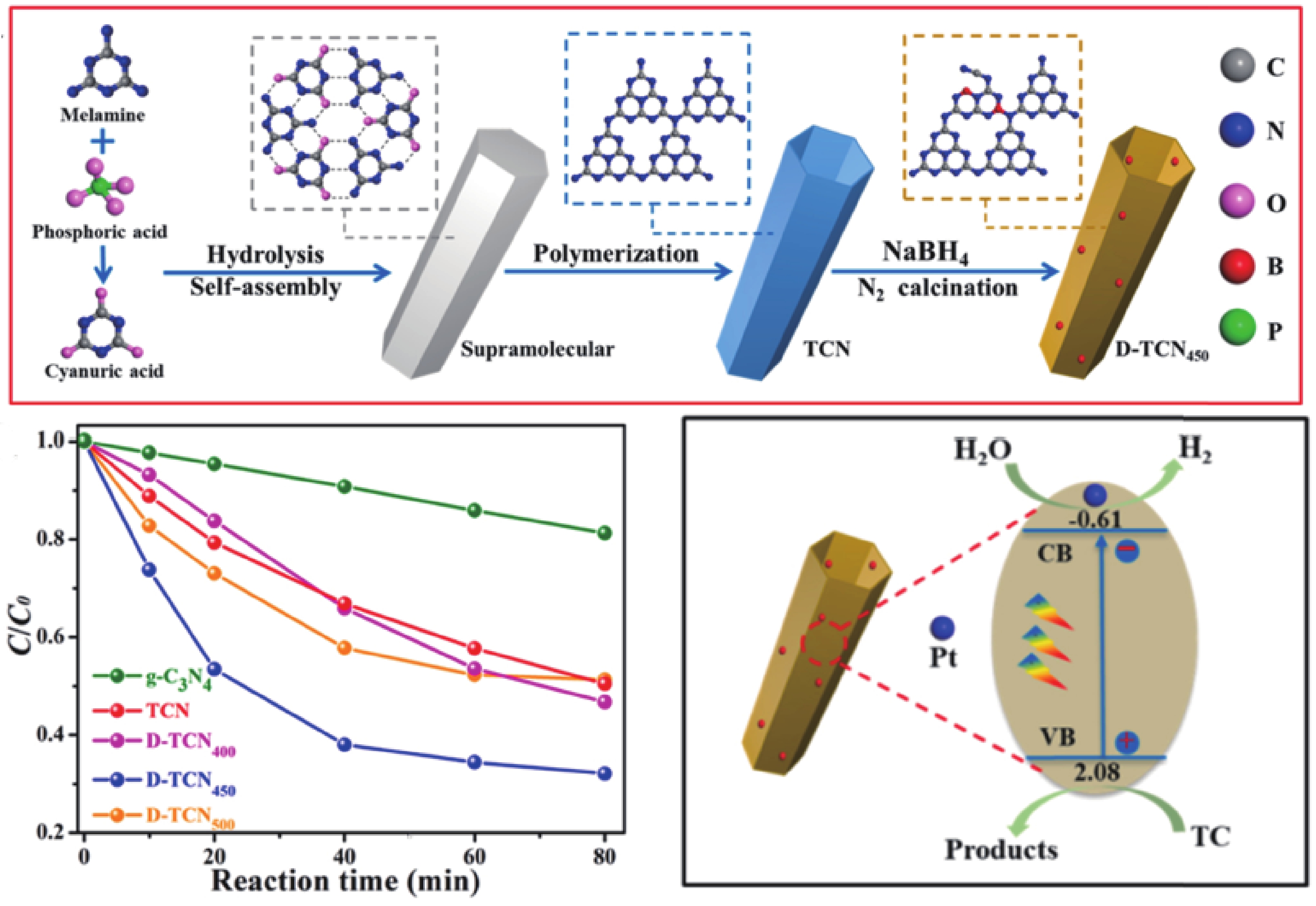














 Jiaxin Song:graduated from Northeastern University with a bachelor's degree in 2021 and is now studying for a master's degree in Jiangsu University under the supervision of Professor Cao Dawei. Her main research interest is the regulation of photocatalytic degradation efficiency of ferroelectric materials
Jiaxin Song:graduated from Northeastern University with a bachelor's degree in 2021 and is now studying for a master's degree in Jiangsu University under the supervision of Professor Cao Dawei. Her main research interest is the regulation of photocatalytic degradation efficiency of ferroelectric materials Malik Ashtar:received Master's degree from Air University Islamabad in 2015 and PhD from the prestigious Huazhong University of Science and Technology, Wuhan in 2021. At present, he is diligently contributing as a postdoc fellow at Jiangsu University. His research mainly revolves around the intricate domains of frustrated magnetic materials and innovative ferroelectric materials
Malik Ashtar:received Master's degree from Air University Islamabad in 2015 and PhD from the prestigious Huazhong University of Science and Technology, Wuhan in 2021. At present, he is diligently contributing as a postdoc fellow at Jiangsu University. His research mainly revolves around the intricate domains of frustrated magnetic materials and innovative ferroelectric materials Ying Yang:received her B.Sc. from Huaiyin Normal University in 2008 and Ph.D. from Nanjing University in 2014. Then she worked at the Ilmenau University of Technology as a postdoc. She joined Jiangsu University in 2017 as an Associate Professor. Her research interest includes oxide materials and nonlinear optics
Ying Yang:received her B.Sc. from Huaiyin Normal University in 2008 and Ph.D. from Nanjing University in 2014. Then she worked at the Ilmenau University of Technology as a postdoc. She joined Jiangsu University in 2017 as an Associate Professor. Her research interest includes oxide materials and nonlinear optics



